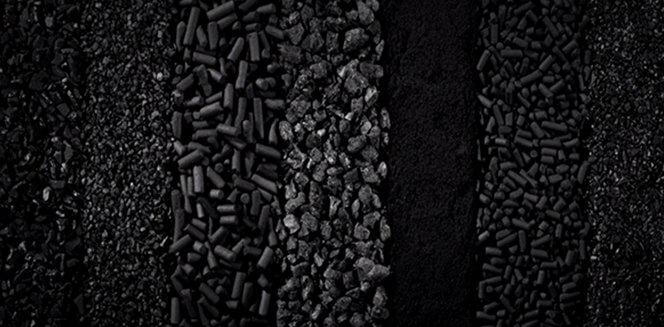Diverse Application Spectrum Sustains High Demand for Activated Carbon Market

19 Jul
2016
The activated carbon market witnesses the commercial placement of thermally treated carbonaceous elements, such as charcoal, in global trade avenues. This industry offers its products for water treatment solutions, food & beverage processing, healthcare applications, automotive parts, as well as air purification systems. Within the application segments, rests the demand volumes for various types of activated carbon (AC) that are available. Powdered activated carbon (PAC), granular activated carbon (GAC), and extruded activated carbon (EAC), essentially dominate the global sales platforms.
According to an in-depth evaluation of the existing market scenario, Allied Market Research forecasts the world activated carbon market capacity to reach 2, 776 kilo tons, by 2020. A 6.83% CAGR for production volume is projected from 2016 to 2020. During the same period, the industry is expected to grow at a CAGR of 9.32% in terms of revenue, and reach $5,129 million by the end of 2020.
Things to know about activated carbon
The carbonaceous element is best known for its high degree of micro porosity. Approximately one gram of AC has a surface area more than 1,300 square meter, i.e. around 14,000 square feet. Industrial and medical applications for AC are well known to one and all, out of which purifications of fluids remains the most significant. The fluids could be flue gases, electroplating solutions, alcoholic beverages, or water. A more balanced concentration is used for both treating poison ingestion and poisoning the pests in farms. Its physical properties aid to its usage in cleaning up oil spills, scrubbing poisonous mercury off the exhaust coming from coal-fired power plants. Apart from the previously mentioned types, impregnated carbon, polymer-coated carbon, bead activated carbon (BAC) are also present in activated carbon marketplace. All of the types are primarily carbon, but are treated in different environments to impart them with different physical properties, where extreme micro porosity remains constant.
Water treatment: the highest consumption segment
Drinking water has remained a critical issue due to rapid urbanization. Ruling governments recognize drinking water to be one among the few basic necessities for healthy living. The issue could have been warded off as a problem for developing and underdeveloped regions alone, yet this is not the exact case. The concern is aggravated further when it comes to highly developed locations. While the former lacks proper infrastructure and organizational involvement, the latter suffers from extreme levels of pollutants that is generated on home ground itself. Applicable techniques in industrial and domestic treatment plants have evolved drastically in recent years. The extraordinary surface area of the activated carbon aids the process of chemical binding when water is passed through it. When added to water, AC’s extreme adsorption property allows it to absorb maximum impurity from it. Quite suitably, the activated carbon market finds huge consumption in water purification applications. It is, however, necessary that the ACs compulsorily meet applicable standards, jointly setup by the American National Standards Institute, and the National Sanitation Foundation (ANSI/NSF).
Regional governments have a crucial role to play in the increased adoption of activated carbon elements in mainstream businesses. For example, the market rates are heavily subsidized for those players who come forward to work in the industrialization interests of the region. It is interesting to note that ruling governments in China and India plan heavy investments towards establishing new water purification plants across the region. This occurs as a part of several plans, which include urbanization of countryside, rural development, and better provisions for urban population. The rapid expansion spanning through these regions imply increased consumption and consequential demand for activated carbon market. An estimate suggests, around 90 million pounds will be used in U.S. drinking water plants on an annual basis. The same study also reveals that the region requires 800 million pounds of AC for removing mercury from the flue exhausts of a coal-fueled power plant. It gives the global industry a calculated hint of total demand it must expect from its application segments.
Coping with the vast demand scenario
Corporate enterprises involved in the activated carbon business understand that profit margins are limited whatever the application area may be. Hence, joint ventures rank the lowest when it comes to listing their business strategies. Agreements & partnerships, as well as acquisitions & mergers are the industry’s second favorite tactical recluse for gaining foothold of the global activated carbon market. Expanding the product portfolio is another way of attracting novice consumers and eventually, capture more market shares. Expansion through increasing their geographical presence and acquiring more clients remains the topmost priority for most business owners. All these collectively account for the prominent growth of the industry.
Technical innovations hold equal good for the activated carbon market as it does for any other. Simple solutions, that do not involve any extraordinary infrastructure leads to even better breakthroughs. For instance, the ‘Ulta Chaata’ concept from a couple based in Mumbai, India, shows how humble components when combined judiciously could open up huge opportunities for all. Rainwater harvesting with minimal resources is what the concept is all about. The installation uses activated carbon in its tem to purify the water accumulated in the ‘inverted umbrella’.
The outgrowing numbers of automobiles, added to the current stringent environment standards across the geographies act as drivers of market growth. If the demand volumes continue to project higher, market participants will need to diversify on their options to manufacture activated carbon at an optimized rate, without compromising with sustainability of natural resources. It remains a challenge for the business stakeholders to find potential in natural elements for producing high-quality activated carbon.

Akhilesh Prabhugaonkar
Author's Bio- Akhilesh Prabhugaonkar holds a bachelor’s degree in Electronics Engineering from the reputed Vishwakarma Institute of Technology. He has a special interest in the fields of forensics, world history, international relations and foreign policy, sports, agriculture, astronomy, security, and oceanography. An ardent bibliophile and melophile, Akhilesh loves to write on topics of his interest and various other societal issues. This love for writing made him enter the professional world of content writing and pursue his career in this direction.
Avenue: Entire Library membership of Allied Market Research Reports at your disposal
- Avenue is an innovative subscription-based online report database.
- Avail an online access to the entire library of syndicated reports on more than 2,000 niche industries and company profiles on more than 12,000 firms across 11 domains.
- A cost-effective model tailored for entrepreneurs, investors, and students & researchers at universities.
- Request customizations, suggest new reports, and avail analyst support as per your requirements.
- Get an access to the library of reports at any time from any device and anywhere.
Related Post
-
How are Submarine Cables Transforming Global Connectivity with Enhanced User Experience?
-
Endoscopy Procedures: Transformations in Techniques and Applications
-
AI-Powered Video Analytics: How the Product Actually Works for enterprises
-
Painting Robots: Transforming Precision Coating and Creative Applications
-
Innovations in Pharmacovigilance Systems Advancing Patient Safety
-
Understanding Edge Security: Keeping Data Safe Near the Source
-
Exploring the Use and Advancements of 3D Laser Scanners in Professional Applications
-
Reinforcing Industrial Controls with Smarter Tools and Training








